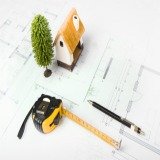Drainage Field Facts and Information
A drainage field is not a component in every home, but if you do not have access to a municipal sewage system and instead have a septic system for your home then it should be a concern. Rural homes and others which are not connected to a municipal system require a septic system that includes a drain field.
The septic drainage system of your home includes a number of components, and all of these should be properly maintained and protected from damage. This will prevent any costly repairs or health risks if your system breaks or overflows.
Your drainage field is an essential element of your home, and is your responsibility alone as the owner of the property. If any repairs or replacement is needed you will be the one who has to bear the cost of this.
The drain field is carefully placed, and the location must pass specific tests to ensure that proper operation will result. Certain soil types may not work well for this purpose, and an engineered septic system may be necessary for some homes.
What Is A Drainage Field?
A drainage field may also be called a leach field or an absorption field, and it is part of the system which allows wastewater to be removed from your home and filtered. This component consists of pipes which are perforated, and these pipes allow wastewater to be filtered and then returned to the groundwater once any contaminants have been filtered out.
The drain field pipes are laid on top of a layer of gravel in a trench, and the pipes are often referred to as laterals. When wastewater leaves your home the effluent from the system is sent to the drainage pipes, where it is released into the gravel and then the soil underneath.
Gravity plays an important role in the way your drainage field operates if it is a typical septic system, because gravity forces the effluent from the system down through the gravel and underlying soil. When the effluent is distributed it is done so evenly through all of the pipes in the leach field, so that there is no problem with one pipe flooding or releasing more fluid than others.
Before a septic drainage system can be installed you will need to have the location of the proposed field tested, to ensure the soil can adequately absorb the amount of effluent that will be released. Some soil types, such as clay, may not absorb adequately and this can interfere with the potential location and even type of septic system that can be used.
Why Is Your Drainage Field Important?
The importance of your drainage field should never be underestimated, because this component is responsible for allowing wastewater to be removed and adequately filtered, so that it is clean by the time this fluid reaches the groundwater. If this field is not properly installed, maintained, and protected your septic system could experience a number of different problems that are costly to fix, and can even pose a health risk at times.
Any home that has had a septic system installed since 1980, and many before this year, will include plans for a reserve or backup drain field location before the installation permit will be issued. This is because if this component of your septic system fails then sewage can back up or even overflow, posing serious health risks due to the bacteria and other harmful organisms contained in the effluent.
Your drainage field involves the wastewater effluent being released into the gravel layer, where the filtering process starts. As the effluent trickles down through the gravel it is filtered and cleaned, and oxygen also plays an important role.
Without adequate septic drainage you could end up with sewage backing up into your home, which can include a black material and a bad stench. Sewage can also start to seep out of the ground over the drain field, and this can cause puddles or ponds of raw sewage to form.
Proper Care And Maintenance Steps With Any Drainage Field
Proper care and maintenance of your drainage field is crucial, because repairing or replacing this component can be very expensive. Make sure that you know where both the current field is and the location of the reserve or backup area.
Never allow any vehicles to drive over the drain field of your septic system, and this is true of the location set aside for any replacement field as well. Any vehicle can compact the ground or break the pipes placed in the gravel trenches under the backfill.
Oxygen is essential for the bacteria in the effluent released to be broken down and filtered out, and if an adequate amount of oxygen is not present then the wastewater may not be filtered appropriately before it joins the groundwater. Septic drainage should never be ground up or macerated before being introduced to the system, because the entire septic system works best when solids are involved so they can be broken down effectively.
You should never allow chemicals, cleaners, or other toxic or dangerous substances into your drainage field, because these can cause damage to the pipes and may not be completely filtered out by the gravel and soil. Bleach and other harmful substances will destroy the good bacteria which breaks down sewage in the system, and can cause problems.
Septic tank and drain field additives and enzymes are a waste of money, and some of these products can cause damage to the drainage pipes and septic system components. Another factor is the amount of use the septic drainage system experiences, because if your tank and field are not utilized fully then there may not be a sufficient amount of beneficial bacteria in the system for it to function properly.
Possible Drainage Field Problems
There are a number of possible drainage field problems that can occur, and these can range from mild to very serious. Problems you may experience can include:
- Soil saturation can be a big problem, because if the soil below your drain field is no longer absorbent then any released effluent can not be properly filtered. This may be caused by a poor absorption rate in the soil or from other liquids entering the leach field and saturating the soil.
- A back up of your septic drainage can occur for many different reasons, and if this happens then raw sewage may flow back into your home or start to appear on your property. There will be a very bad smell, and black ooze or even solid pieces of sewage may create a safety risk.
- Freezing can occur in your drainage field if it is not used as often as it should be, because without frequent use the proper levels of good bacteria can not build up in the system and will result in a lower temperature in colder weather. Bacterial activity creates heat, which will prevent any freezing in the pipes outside and keep any damage from occurring.
- Fixtures and drains which do not drain adequately, and that require more time than normal to allow fluids to be completely eliminated, are a common problem. If the drain field can not release all of the effluent coming from your home then this will prevent the drains and fixtures from working properly.
- Contamination of your drinking water is possible if your home has a well and the effluent is not completely filtered before it reaches the water table. This can be determined by testing your well water, and if nitrates or certain bacteria types are found then you may need to evaluate your drainage field to make sure it is not affecting your drinking water.
- Root infiltration can cause the perforated pipes to break or can create blockages in the system. This is the reason why you are advised not to plant any trees or other plants with invasive roots within at least thirty feet of the area where your field is located.
Why Does A Drainage Field Fail?
There are a number of different reasons why your drainage field may fail, and this can be very frustrating and expensive when it happens. In addition the failure of this system may cause you to receive a citation from the health department if the raw sewage is present outside the leach field because this is a health code violation.
One reason why you may experience drain field failure is because of residues which build up in your system, and these residues can include greases and fats, solid particles, and even soaps. This causes the soil to become less effective at absorbing the effluent and limits the amount that can be handled properly.
The solids and residues from your septic drainage system can fill in the spaces and gaps in the gravel and soil, and this will restrict the flow and filtering of the effluent released. When this happens then a backup will occur, and a new system or leach field may need to be installed to correct this situation.
Installing a new drainage field can be costly, and may run from five thousand dollars up to thirty thousand dollars or more. This may not be necessary if you take proper care of this component, and regular routine maintenance can prevent a failure and save you time, money, and aggravation.
What To Do About Drainage Field Damage And Overflow
If you experience drainage field damage or overflow there are some steps that you will need to take. First you will need to have your entire septic system examined, to determine where the problem is and what is causing it.
A common reaction is to purchase a product which claims to resolve any septic drainage problems, and these products may contain enzymes or chemicals. Many of these products claim to work but they may make the problem worse instead.
You may need to have a new field installed, at a high expense usually, because the old one may not be able to recover and may need to be abandoned instead. This eventuality is why any new construction which requires a drain field installation will also require a plan for a back up option as well, so that if a failure occurs there is another location which can be used.
If your drainage field fails or is damaged in any way then you will need to replace it as soon as possible. A fast response can help limit the amount of raw sewage which enters your home or works to the surface of your property.
Reserve Drainage Field Location Considerations
There are a number of tests that must be performed on any reserve drainage field location before it can be approved, and there are a number of considerations that will be looked at. The soil absorbency is essential, and Perc test and deep hole test will need to be performed to ensure this reserve area soil absorbency will be adequate for the system.
The size of your reserve drain field will depend on the size and water use of your home. If you have a small home with only a few people and little water use then you will not require as much drainage as a home with many people and a lot of water use.
The property you are using is another consideration, because any marshy or swampy areas near the reserve septic drainage field may affect the soil absorption rate and make the proposed location less than ideal. Sometimes a typical septic system is not possible, and one must be engineered for your specific property.
Any slopes, hills, or other geographical features must also be considered when finding a good location for the reserve field. The layout of the location will determine whether any pumps or specially engineered plans will be needed for the system to work effectively.
If a reserve drain field is not possible then your plans for construction and an installation permit may be denied. If the soil fails a hole test or Perc test then you may have to look at a system that is engineered specifically for your property features and geography.
There are alternative septic system types which can help eliminate any problems in using a typical system, and a reserve field may or may not be needed depending on which alternative system is used. This is why it is very important that you understand which system you have, what the requirements and maintenance schedule are, and exactly how it operates.
You Might Also Like:
Home Design Floor PlansHome Design Floor Plans |
Green Home DesignsGreen Home Design |
Boat Home PlansBoat Houses |












